
After her endometriosis diagnosis and subsequent surgery, Meredith Koloski is paying it forward one downward dog at a time. The 42-year-old Little Silver, NJ-native, and 15-year yoga veteran began endOM Yoga, her by-appointment yoga classes and workshops, with a mission, she says, "to help women with endometriosis and autoimmune disease become less overwhelmed and more empowered advocates for their own well-being." If you can't book an appointment with her, don't sweat it: Koloski says you can reap the benefit of these eight yoga poses at home, by breathing deep, stretching, relaxing to help ease chronic pain.
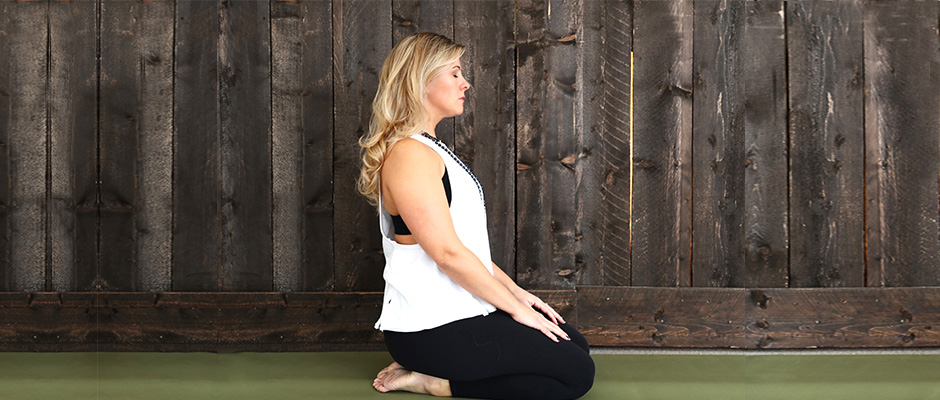
(photo credit: Jillian Schultz)
1. Thunderbolt or Rock Pose (Vajrasana)
Get Into It: Kneel and drop your bottom to your heels. "When you sit in Rock Pose, it places pressure on the reproductive organs and increases circulation in the pelvic area," Koloski says. "Breathe long and deep."
What It Does: "With the heels straight up into the buttocks, they stimulate two acupuncture pressure points. If you experience painful menstrual cramps, twisting in this pose can help to ease your pain by stretching the tissues and stimulating the liver.

2. Sat Nam Kryia: “I agree to the truth within.”
Get Into It: "Interlock all the fingers except the index fingers pointing straight up. Raise the arms straight up and rotate the upper arms inward so that they are hugging the ears. In this position, you will chant the mantra 'Sat Naam.' Repeat 1 to 3 minutes. At the end of the chant, inhale completely and hold in, imagining that you are sending the energy up through the top of the head. Exhale. It's important to rest afterward to let the system regenerate."
What It Does: "This exercise activates the parasympathetic nervous system, allowing the body time to regenerate," says Koloski.
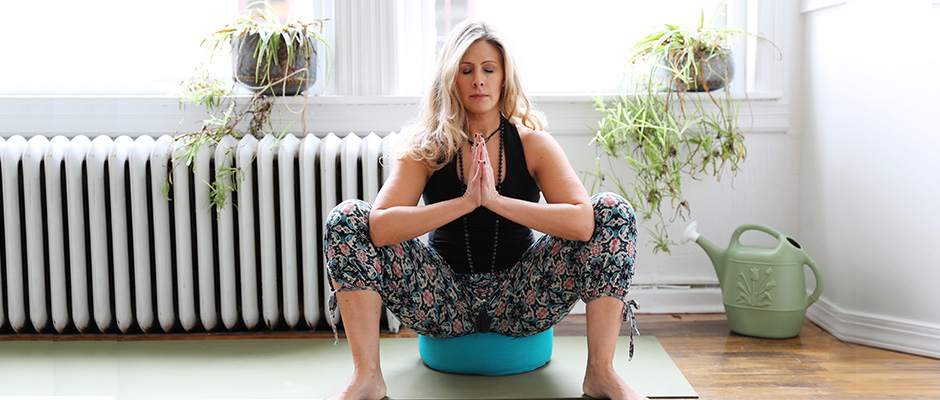
3. Squat (Malasana)
Get Into It: Standing with feet wider than hip-width apart, bend your knees and lower your hips, coming into a squat.
What It Does: "This pose is great for menstruation cramps, endometriosis pain, and digestive problems," says Koloski. "It opens up your pelvic area, increases flexibility and circulation in this area." Need to modify, or recently had surgery? Koloski advises placing a pillow under heels, leaning against a wall for support or sitting on a pillow or some blankets.
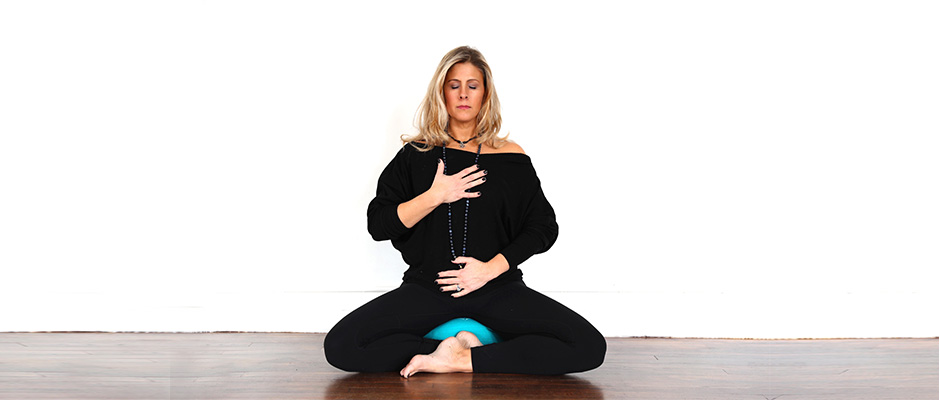
4. Pause Breath
GET INTO IT: "Inhale deeply, then pause for 5 to 10 counts," says Koloski. "Exhale, pausing for 5 to 10 counts. Start with 3 minutes and work your way up to 8 minutes."
WHAT IT DOES: "Meditation and breath work help to manage our stress levels and can relieve some tension. Many of us with endo have a revved up central nervous system because of years of pain, also known as central sensitization. By simply closing our eyes and bringing our gaze gently up towards our brow, we activate the pineal gland," Meredith explains.
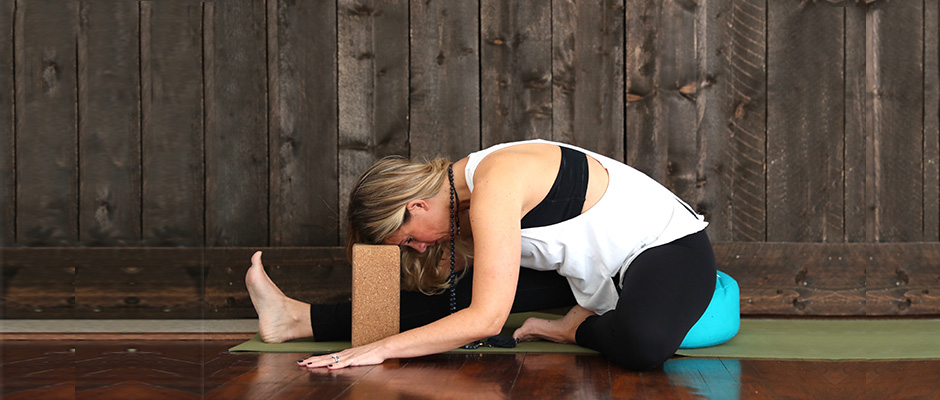
5. Forward Bend (Janu Sirasana)
GET INTO IT: Stand tall, then fold over, lowering your head to your knees.
WHAT IT DOES: This pose is "a life safer post-surgery,” says Koloski. "No matter how you modify it, a head-to-knee forward bend supports your reproductive and digestive system, stimulates your liver and kidney, relieves anxiety, fatigue, headaches, menstrual cramps, and can even soothe mild depression. This pose is also calming because it stimulates the bladder meridian that, according to Chinese medicine, flows down the back of your body and the backs of your legs. The urinary bladder channel has to do with our ability to cope with life and change."
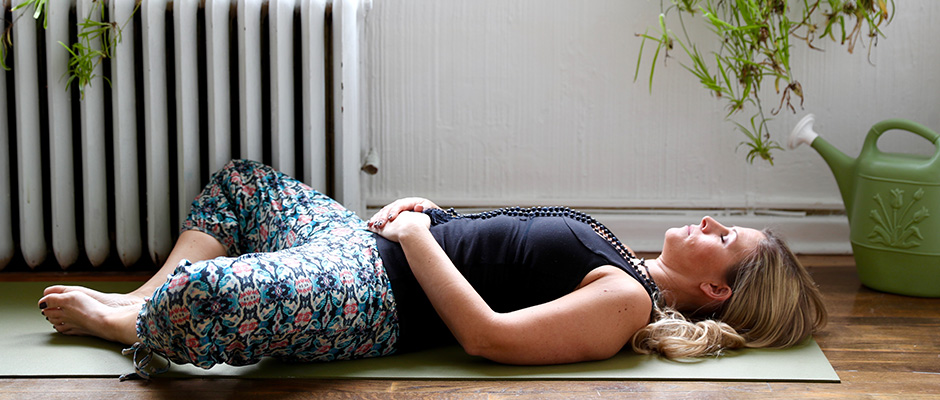
6. Three-Part Breath (Supta Baddha Konasana)
GET INTO IT: Place one hand on your heart and one on your belly. Feel your belly rise, ribs expand, and heart lift on the inhale. On the exhale, the heart moves deeper in, ribs hug around, with the belly moving gently to spine.
WHAT IT DOES: "It stimulates abdominal organs like the ovaries, bladder, and kidneys. Use these poses during times of pain, bloating, or discomfort. It all begins with our mindset. If we practice focusing on the pain as our teacher, as our messenger, we can begin to embrace what our body is trying to communicate and shift our focus onto healing, our creativity, our sensuality, our worthiness and remove the blocks to allow the energy to flow freely and heal.”
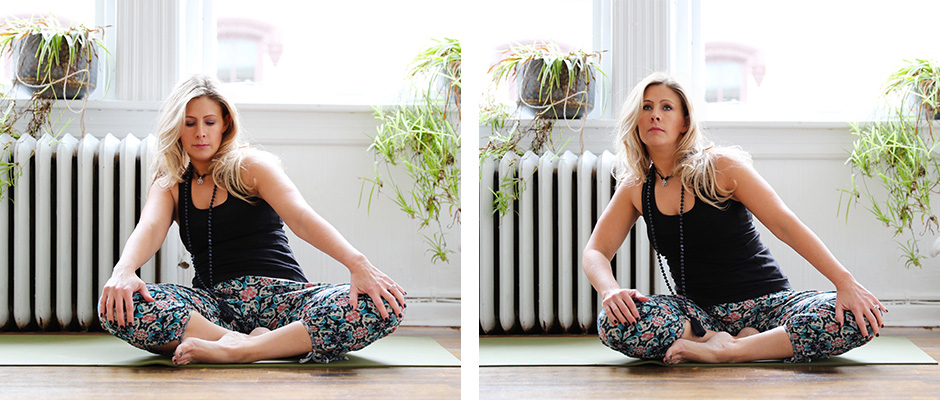
7. Sufi Grind
GET INTO IT: "Sit and put hands on knees. Begin rotating clockwise in big circles. (Flex the spine to the front, right, back and left). After one minute, move counterclockwise. Pause when you finish and notice your breath. Is it easy, shallow, deep? Can you relax your belly or do you tend to hold it in? Imagine breathing into your uterus."
WHAT IT DOES: "It's good for digestion, constipation, and stress relief," says Koloski.
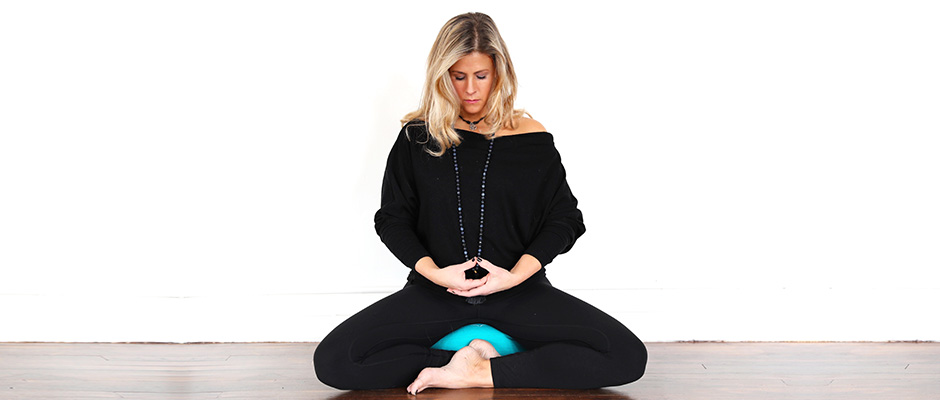
8. Sacral Chakra (Svadhisthana)
GET INTO IT: Simply close your eyes, and focus healing energy into your lower abdomen. Repeat a positive affirmation like, "I love and accept myself exactly as I am right here and right now."
WHAT IT DOES: "I finish my practice by tapping and tuning into my Sacral chakra, Svadhisthana. This chakra is located below the naval and encompasses the reproductive organs, pelvis, large intestine, the lower vertebrae, appendix and bladder (all areas often burdened by endometriosis)."
Editor's note: Meredith Koloski will be speaking at EndoFound's Patient Day in NYC on March 18th. You can register for the free event here.









